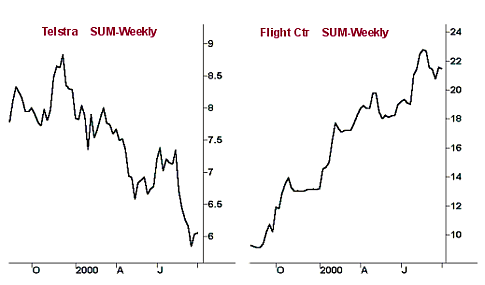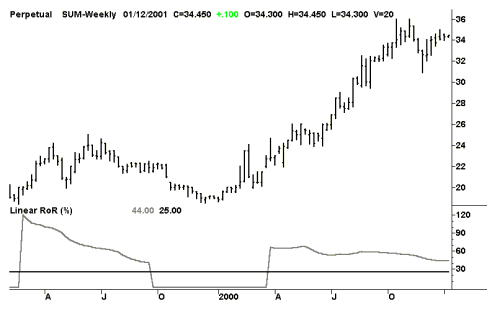- Active Investing - what is it?
- All Weather Trading Plan using Complex Theory (Parts 1 - 4)
- Asset Management (Parts 1 - 4)
- Back Testing
- Breaking out from consolidation
- Breakout trading in all market conditions
- Charting in a Nutshell
- Children of the Bear
- Fibonacci and the Golden Ratio
- Going Public
- Hull Moving Average
- MACD Breakout Trading (Parts 1 - 2)
- Making decisions with a Simple Moving Average
- Probability: do you have the stomach for it?
- Profit Taking
- Relative Strength
- Record Keeping
- Risky Business
- Short Selling
- Social Media Bubble
- Switching Gears
- Rate of Return indicator
- Time and Money
- Tools of the Trade
- Trade Warrants (Parts 1 - 4)
- Trading without spending money
- Trendlines
- Triangles
- GMMA's on Weekly Charts
- Writing Custom Indicators
Articles include:
The following diagram explains the basic dynamic that drives share prices either up or down.

Investors use fundamental analysis to find listed Companies that are financially sound, have solid management and good future prospects. But Investors must be prepared to wait for share prices to rise because the above process, although reliable, can take years to work.
Traders use technical analysis to observe price activity and buy shares that are rising in price and sell shares that are falling in price. Chartist's ignore factors that effect opinion but are prepared to work hard at observing price activity and usually monitor the stockmarket on a daily basis.
Active Investors combine both fundamental and technical analysis to ensure that the entire process that drives share prices upwards is working. Active Investors spend approximately 1 hour per week checking their share portfolio. Active investors use dynamic analysis.
Nobody invests in Fundamentals... we buy & sell the share price; not factors that affect opinion. Both of the shares shown below have excellent fundamentals but only one of them is going up.

Active investors use technical analysis to test and measure the results of fundamental analysis in the same way that everyone else tests and measures the results of their work. The process starts by finding companies with good fundamentals. You can use the research of others, ie. books on fundamentals such as TopStocks by Wrightbooks, Stockbroker's research, etc. We then test the annual Rate of Return of the shares in these companies with the RoR indicator.
The Rate of Return indicator is used to calculate the annual rate of return of a share given its current rate of climb or fall. It achieves this by calculating the annual return and dividing it by the current share price. The result is then multiplied by 100 to convert it to a percentage.
-
Example
- Lets assume that a share is climbing at a rate of $2 per year.
- The current price of the share is $5.
- The annual 'Rate of Return' would be 0.4 ($2 divided by $5).
- Converting this to a percentage we get 0.4 x 100 = 40%.
The Rate of Return Indicator can be seen in the following chart. Technically it is referred to as the 'Linear RoR' Indicator because it uses linear regression as opposed to moving averages.

In the above chart PPT is enjoying an annual rate of return of 44%. The horizontal bar placed at 25% is the cutoff level. Searches can be performed using the Rate of Return Indicator to sift out shares that only have an annual rate of return higher than the 25% cutoff. The linear RoR indicator switches itself 'On' when it detects the presence of a valid trend. It automatically switches itself 'Off' if the rate of return falls below 25%, the money flow drops below $10 million/3 Months, the trend reverses or price activity moves sideways for an extended period of time. It is an 'Intelligent' non-lagging indicator that gives unambiguous signals.
Ask yourself whether you know any of the companies shown in the following charts. Then ask yourself if you own shares in any of these companies. Active investing is the foundation of successful trading.

